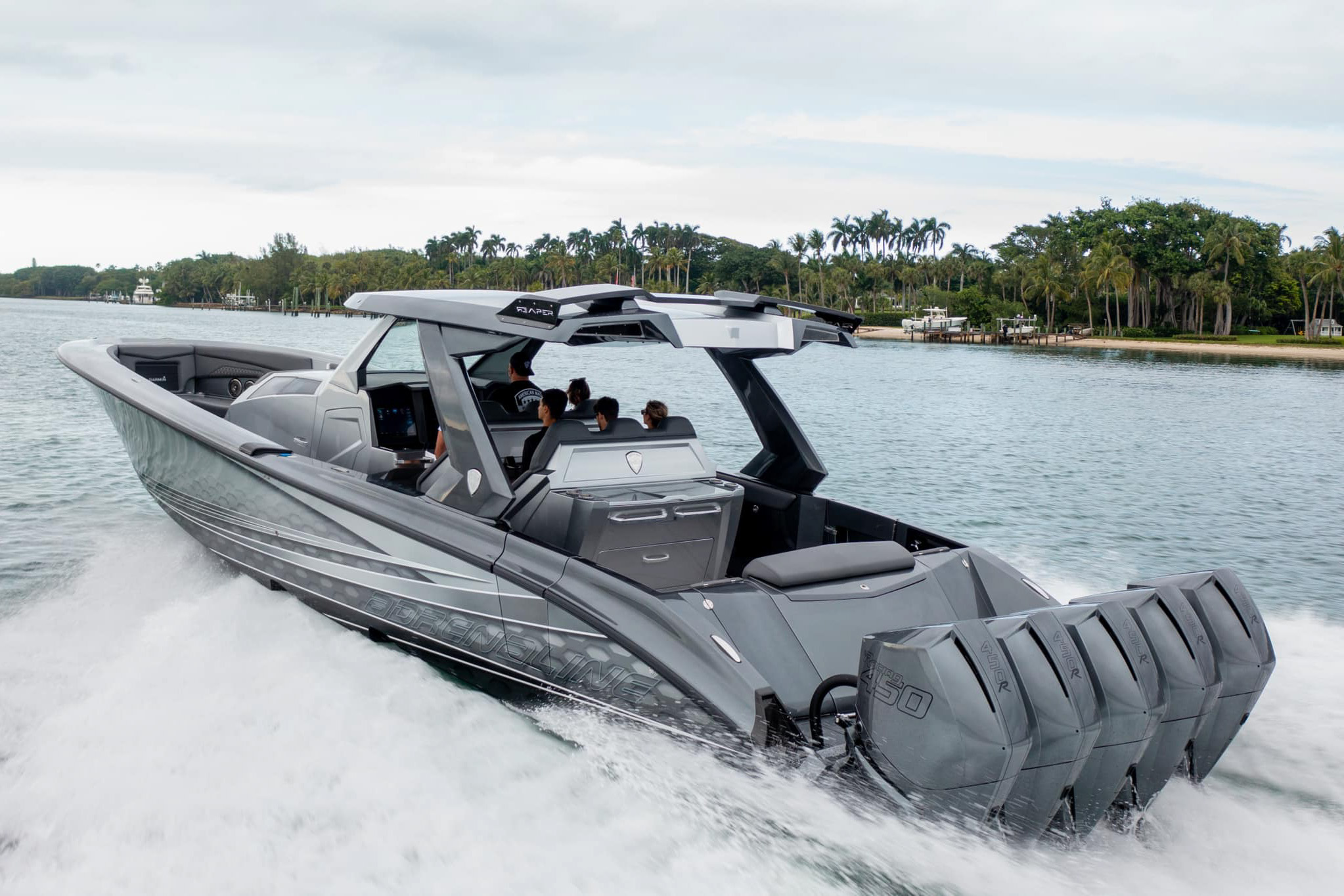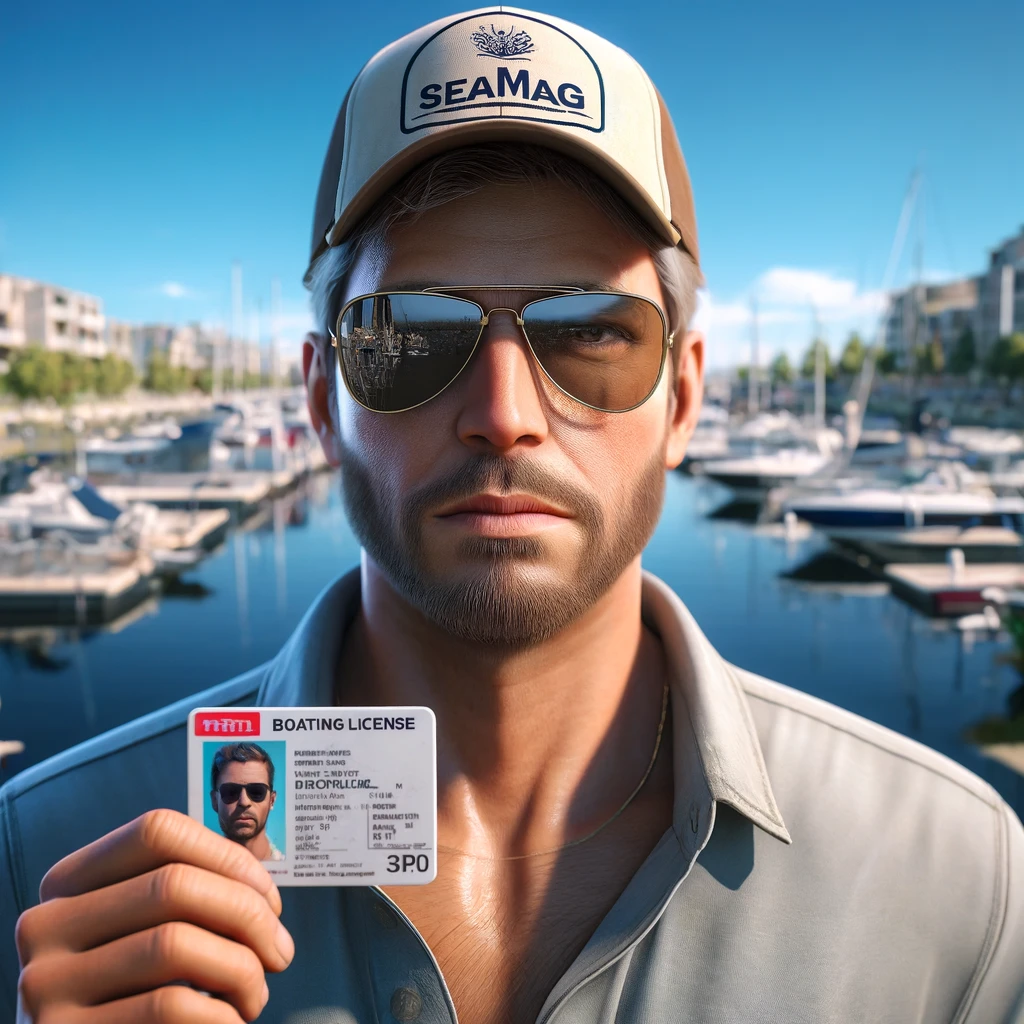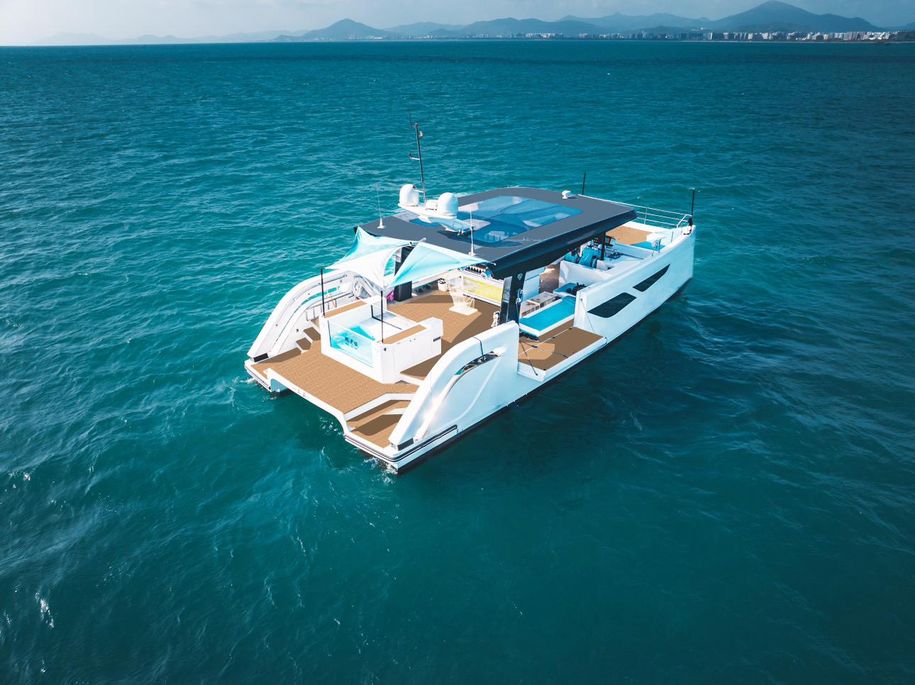Navigating Boat Rentals & Rides: Expert Advice for Effortless Adventures
Renting a boat can be an exciting way to experience life on the water and explore new destinations during your vacation. With a wide variety of boat rentals available, it's essential to know how to navigate the process and ensure a smooth sailing experience.
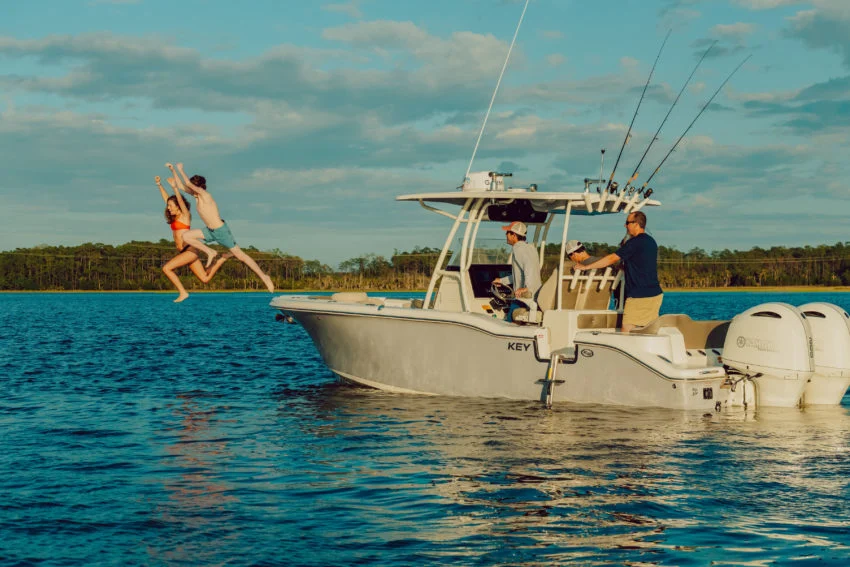
From choosing the right boat to mastering the art of seamanship, there's a lot to learn in order to make the most of your boating adventure.
Whether you're an experienced sailor or a beginner, being prepared is key to a successful trip.
Pre-departure preparation and having a solid grasp of safety and navigation techniques will ensure a safe and enjoyable experience for all on board.
Additionally, being equipped to handle unexpected situations and being mindful of special considerations for sailors will contribute to a memorable and stress-free vacation.
Key Takeaways
- Choosing the appropriate boat and thorough pre-departure preparation are crucial for a successful sailing experience.
- Being well-versed in safety, navigation, and seamanship techniques is essential for a smooth and enjoyable boat trip.
- Planning for unexpected situations and being aware of special considerations help ensure a stress-free and memorable adventure.
Choosing the Right Boat for Your Adventure
Understanding Different Vessel Types
When planning my next sailing adventure, I always start by identifying the type of vessel that is best suited for my intended activities.
There are two main types of boats: sailboats and powerboats.
Sailboats are powered by wind using sails, making them eco-friendly and providing a more serene sailing experience. In contrast, powerboats use engines, offering faster speeds and the ability to tow water skiers and wakeboards.
Depending on the purpose of my trip, I might choose a sailboat for a quieter, more relaxed experience or a powerboat for activities requiring speed and power. Regardless of the choice, understanding the different vessel types is crucial to ensure a smooth and enjoyable journey.
Factors to Consider When Selecting a Boat
Before choosing the right boat for my adventure, I take into account several factors:
- Experience level: I must be honest with myself about my proficiency in handling a boat. As safety is paramount, my ability to safely navigate the vessel is essential.
- Purpose of the trip: I consider the activities I plan to do, such as fishing, water sports, leisurely cruising, or exploring.
- Boat size: The size of the boat is crucial to ensure the safety and comfort of my passengers. If I'm planning an offshore fishing trip, I would typically need a boat of 30 ft. or larger.
- Budget: It's essential that I find a boat that fits within my budget without compromising my adventure's quality or safety.
Considering these factors helps me narrow down my options and find the perfect boat for every occasion.

Boat Rental Platforms and How to Use Them
With the variety of boat rental platforms available today, finding the perfect vessel has never been easier.
One example is Boatsetter, a boat-sharing platform where I can either list a boat I own for others to rent or book a boat to rent myself. I simply need to:
- Enter the location and dates for my adventure.
- Browse through a list of available boats that meet my preferences.
- Filter my choices based on factors such as size, price range, and amenities.
- Reach out to the boat owner to discuss specifics and finalize the rental.
Finding the ideal boat for my adventure is vital to guaranteeing a smooth and enjoyable experience. By understanding different vessel types, considering important factors when selecting a boat, and taking advantage of boat-sharing platforms like Boatsetter, I can ensure that my trips always begin with a great start.
Pre-Departure Preparation
Packing the Essentials for Your Trip
When it comes to smooth sailing, I cannot stress enough the importance of packing the right essentials for your boat trip.
I always ensure I have a well-stocked first aid kit, safety equipment such as life jackets and fire extinguishers, and ample food and water supplies for the journey ahead.
Here's a brief list of items I never skip out on:
- First aid kit
- Life jackets
- Fire extinguishers
- Food and water
- Navigation tools (maps, GPS, compass)
- Communication devices (VHF radio, cell phone)
Creating a Precise Passage Plan
A precise passage plan is crucial to my sailing experience.
I make sure to include key details such as routes, estimated travel times, anticipated stops, and potential hazards in my plan.
Moreover, I always inform someone on land about my sailing plans, so they are aware of my whereabouts and can assist in case of an emergency.
Conducting Boat Maintenance Checks
Before setting sail, I always conduct thorough boat maintenance checks to ensure the vessel is in optimal condition for the journey.
I check the engine, fuel levels, bilge pumps, and steering system, as well as ensure that the warning lights and alarms are functioning properly.
This allows me to confidently set sail, knowing that I've minimized the risk of potential issues arising during my trip.
Assessing Weather Conditions Before Setting Sail
Last, but certainly not least, I never forget to assess the weather conditions before embarking on a boat trip.
Understanding the weather forecast helps me plan my route, attire, and any necessary precautions for the journey.
Additionally, I always ensure I have access to updated weather information while on the water in case conditions change unexpectedly.
This enables me to make informed decisions and adjust my plans accordingly to ensure a seamless sailing experience.
Safety and Navigation
Essential Safety Guidelines for Smooth Sailing
Safety should always be a priority when sailing.
One of the most important safety measures is to ensure that life jackets are worn by everyone on board.
Life jackets should be properly fitted, well-maintained, and easily accessible.
Additionally, it's important to be familiar with local boating regulations and follow all safety guidelines.
Another key aspect of sailing safety is good communication.
Make sure to establish a clear communication system with your crew and always have a reliable means of contacting the authorities in case of emergencies.
Moreover, keeping an eye on the weather and understanding the possible effects of sudden changes in weather conditions can help keep you prepared for unexpected situations.
Regularly checking the weather forecast and monitoring traffic around you are essential.
Utilizing Nautical Charts and Navigation Aids
Utilizing nautical charts, compasses, GPS, and radar systems are crucial for avoiding hazards, staying on course, and properly assessing your position.
Familiarizing yourself with your boat's available navigation equipment and knowing how to use navigation aids will ensure smooth sailing.
When using a chart, keep in mind that it represents the area around you with specific symbols, lines, and colors. Be sure to get acquainted with these elements before setting sail.
Here's a list of common navigation aids to have on board:
- Nautical Charts: Paper or digital charts showing the depths, landmarks, and navigational hazards
- Compass: A magnetic compass for establishing your bearings
- GPS: A satellite-based system that provides your exact position
- Radar: A device that scans your surroundings to detect other vessels and obstacles
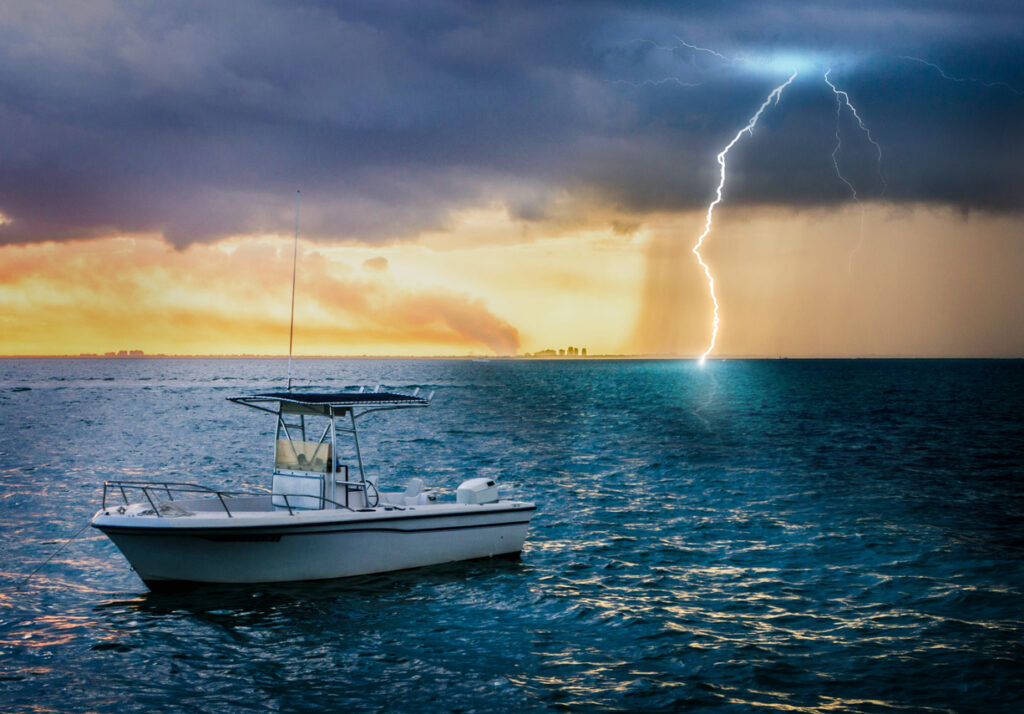
Techniques for Handling Rough Waters and Currents
Encountering rough waters and strong currents is a common challenge for sailors.
Understanding the mechanics of tides, waves, and currents can make navigating these waters less daunting.
When dealing with cross tides, steer into the tide in degrees by 10 times the value of the tide in knots.
For example, for a cross tide of 1 knot, steer 10º into the tide; for 2 knots, steer 20º; and for 3 knots, steer 30º.
To handle rough waters, reduce your boat's speed to a comfortable level and adjust your course to encounter the waves at an angle. This helps dampen the impact of the waves on your vessel.
Constantly communicating with your crew and maintaining situational awareness can also contribute to a smoother sailing experience in rough conditions.
Seamanship and Handling the Boat
Basic Maneuvers and Boat Handling
When I am sailing, one of the first things I focus on is mastering basic maneuvers and boat handling.
Whether it's steering, acceleration, or stopping, it's crucial to become familiar with the handling characteristics of your boat.
Developing my boat handling skills enables me to navigate through various sea conditions and enhance my overall sailing experience.
Some essential basic maneuvers that I practice include:
- Sailing in a straight line
- Turning the boat efficiently
- Anchoring and mooring
- Navigating through tight spaces
Having a reliable and dedicated crew also helps me effectively manage the boat.
Proper communication and teamwork play a significant role in safe sailing.
Understanding Knots, Lines, and Anchoring
As a sailor, I know the importance of mastering various knots, lines, and anchoring techniques.
There are different types of knots that are essential for different tasks on a boat. Some of the most common knots I use are:
- Bowline: It creates a fixed loop at the end of a line.
- Clove hitch: It helps secure a line to a post, rail, or bollard.
- Figure-eight knot: It serves as a stopper knot on the end of a line.
Learning how to properly deal with lines, fasten things securely, and anchor the boat are skills that become invaluable when sailing.
By having knowledge of these techniques, I can ensure a safe and smooth boat ride for everyone on board.
Dealing with Seasickness and Other Passenger Concerns
One common issue that I encounter during sailing is seasickness. It can affect both myself and my passengers.
To minimize the chances of developing seasickness, I recommend the following:
- Focusing on the horizon: By maintaining a visual focus on a fixed point, it helps stabilize my vision and reduce the feeling of motion sickness.
- Staying in the fresh air: Getting ample ventilation is essential to keeping seasickness at bay.
- Eating light: Heavy meals can increase the possibility of feeling nauseous, so I prefer to eat light before embarking on a boat ride.
In addition to combating seasickness, I prioritize my passengers' safety and comfort.
This includes regularly inspecting the vessel for hazards, investing in proper safety equipment (e.g., life jackets, fire extinguishers), and being alert for any sudden changes in weather or sea conditions.
Planning for the Unexpected
Emergency Procedures and Safety Equipment
When I prepare for a boat ride, my priority is always safety.
Before renting a boat, I familiarize myself with the emergency procedures and ensure that the proper safety equipment is on board.
There should be enough life jackets for everyone on the vessel, and they should be properly sized and easily accessible.
It's also essential to have a fire extinguisher on board, as fires can be a common hazard on boats.
Furthermore, I always make sure the boat is equipped with a throwable flotation device and a first aid kit.
Crafting a 'Plan B' for Sudden Weather Changes
When it comes to boating, weather can play a significant role in the overall experience.
To ensure a smooth sailing experience, I always keep an eye on weather patterns and have a solid understanding of the local area's climate.
However, despite the best preparation, sudden weather changes can occur. That's why I always have a 'Plan B' in place.
This may include knowing alternate routes, different marinas, or even having a second itinerary planned in case the original plans are no longer possible due to inclement weather.
Communication and Distress Signals
Another key aspect of planning for the unexpected involves communication and distress signals.
I never leave the dock without a charged and functional communication device: a mobile phone or, preferably, a VHF radio.
VHF radios have additional benefits, as they can communicate with nearby boats and the Coast Guard when required.
In addition to a communication device, I educate myself on emergency distress signals, such as visual (flares) and auditory (whistle or air horn) signals.
Having these tools and the knowledge of how to use them properly can make a significant difference in the outcome of any unexpected situations during my boating adventures.
Special Considerations for Sailors
Respecting Marine Life and Coral Reefs
One of the foremost concerns any sailor should have is protecting our environment.
While sailing, it's vital to take care of the delicate marine ecosystems that house an array of beautiful coral reefs and diverse marine life.
I ensure that I don't throw any waste or litter overboard, as it can have a negative impact on the sea creatures and their habitats.
In some areas, coral reefs are quite fragile, so I pay close attention to my GPS navigation and sailing charts, staying away from restricted or sensitive zones.
Local Regulations and Port Etiquette
When sailing to different places, I always respect local regulations and port etiquette.
Regulations vary by region, so it's a good practice to get a hold of local cruising guides and familiarize myself with the rules for that specific area.
Upon entering a port, I make sure to maintain a safe speed and follow proper procedures for docking and mooring.
Here's a brief list of things to consider for port etiquette:
- Ask for permission before entering
- Remove and stow any removable items or lines that may cause inconvenience
- Make sure the boat is clean and presentable
Tips for Beginners at Sailing
As a beginner, sailing can be an overwhelming experience. To make the most of my time on the water, here are few tips I follow:
- Invest in proper sailing attire: Comfortable clothes, non-slip shoes, and weather-appropriate gear
- Familiarize myself with basic sailing terms, knots, and techniques before setting sail
- Take a sailing course to build competence and confidence
- Maintain a well-stocked first aid kit and seasickness remedies, like ginger
- Check local weather and wind conditions before embarking on any trip
- Plan my route and waypoints in advance
- Practice good seamanship: Ensure the boat is well-maintained, properly secured, and prepared for any emergency situations
- Make a habit of regular safety briefings and communication with my crew
Enjoying Your Trip
Making the Most of Your Rental Experience
When I rent a boat for a vacation, I always make sure to take advantage of all the opportunities it offers.
One of the first things I do is familiarize myself with the boat and its amenities. Efficient use of space and balancing weights is crucial for comfortable sailing, and the boat owner can often provide helpful tips on optimizing space usage [^1^].
Forming a good relationship with my crew is essential. On a sailing trip, I make sure everyone is comfortable, respectful, and communicates effectively.
Sharing new experiences, laughing together, and recounting adventures create a positive atmosphere and foster teamwork.
Exploring Destinations and Enjoying Local Scenery
When sailing, I always take the time to appreciate and enjoy the stunning scenery and picturesque landscapes.
Some destinations offer unique local attractions and cultural experiences that should not be missed. To make the most of these opportunities, consider incorporating the following activities into your trip:
- Sunbathing on pristine beaches
- Observing marine life and birdwatching
- Exploring coastal towns and villages
- Hiking to remote coves and hidden gems
- Sampling local cuisine and nightlife
In addition, I use my on-board sailing navigation equipment and sailing navigation apps to ensure optimal routes and a safe journey while exploring new destinations.
How to Make Money as a Captain with Boat Rentals
If I were a skilled captain, I could turn my sailing hobby into a money-making opportunity.
For instance, I could provide guided tours for tourists, taking them to popular destinations and sharing with them my knowledge about the local area.
With proper planning, I would have the opportunity to expose visitors to beautiful horizons and turn sailing into a profitable venture.
Another way to make money as a captain is to offer sailing lessons.
Passing on my skills to others and teaching them how to stay safe on the water would not only be rewarding but also give me the personal satisfaction of contributing to the growth of the sailing community.
Frequently Asked Questions
What are the essential navigation skills needed for piloting a rental boat?
I believe that understanding basic navigation techniques and the use of essential tools like charts, GPS, and compasses is crucial for successfully piloting a rental boat.
Mastering these skills will make the sailing experience safer and more enjoyable. According to this guide on basic sailing, familiarizing yourself with primary sail types and their purpose is also important for effective boat navigation.
Which safety measures should be taken prior to launching a boat journey?
I recommend checking the weather forecast before setting off, ensuring that life jackets are available for all passengers, and reviewing emergency procedures.
As mentioned in the Mastering Catamaran Sailing guide, safety should always be a top priority when sailing.
What methodologies are recommended for lake navigation in varying weather conditions?
In varying weather conditions, I suggest focusing on understanding wind patterns, currents, and wave behavior on lakes.
It's essential to monitor the weather and adjust navigation techniques accordingly. This Boating for Beginners guide provides great insights on navigating waters during different weather conditions.
How should you effectively plan and pack for a day-long boat excursion?
To ensure a smooth day-long boat excursion, I advise planning a navigation route, bringing essential safety equipment, and packing adequate food and beverages.
According to this article on boat rentals, it's important to minimize packaging to make the journey hassle-free.
What are the legal requirements and licenses necessary for renting and operating a boat?
The legal requirements and licenses for renting and operating a boat can vary depending on the location, boat type, and local laws.
I recommend researching the specific requirements for the area you plan to sail in and ensuring that you meet those requirements before starting your journey.
How can you ensure efficient fuel management and conservation during boat rides?
To ensure efficient fuel management and conservation, I recommend maintaining a steady speed. Avoid sudden acceleration, and regularly monitor fuel levels.
In addition, proper boat maintenance is also essential for fuel efficiency. Make sure to regularly check the engine and propeller.
Charlie is Editor-in-Chief of Sea Magazine

